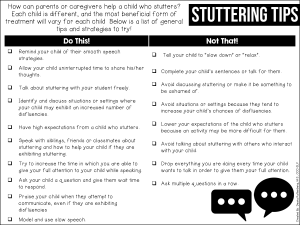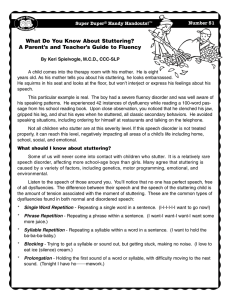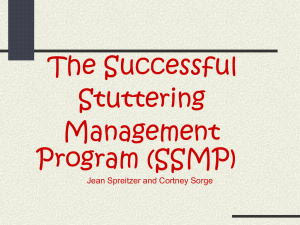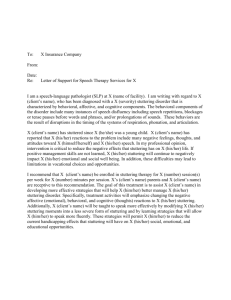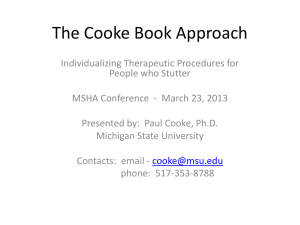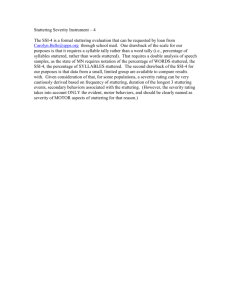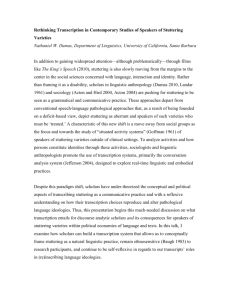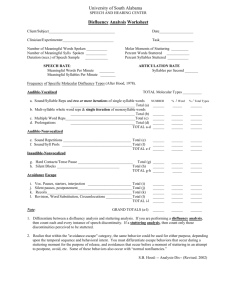Classroom Interventions for Stuttering
advertisement
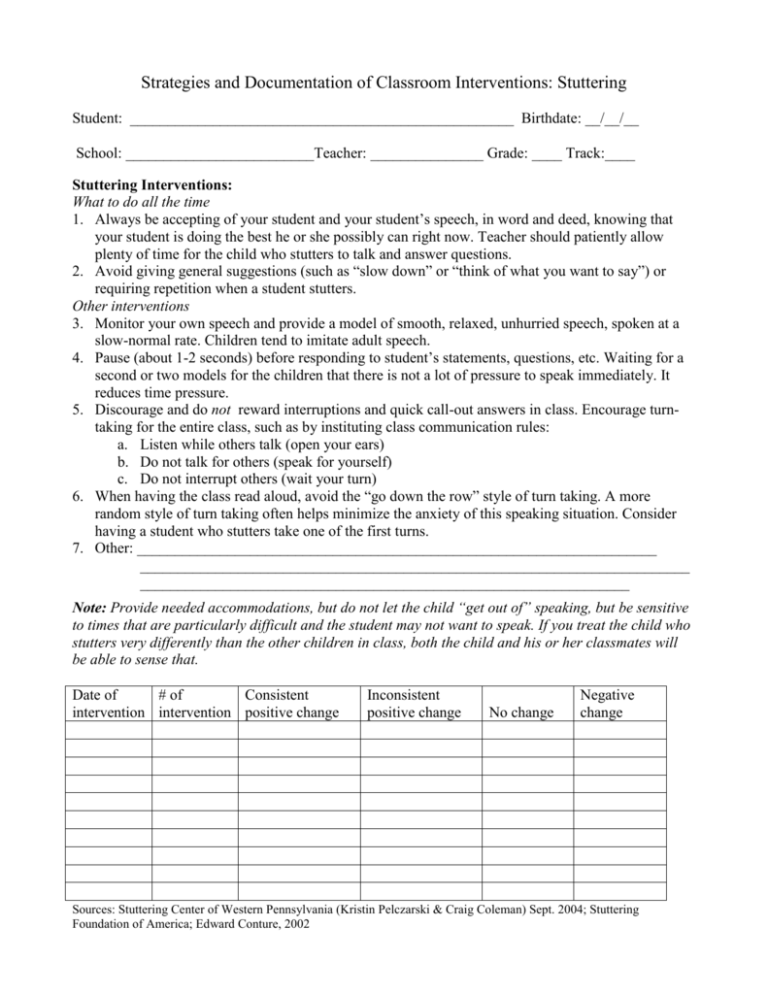
Strategies and Documentation of Classroom Interventions: Stuttering Student: ___________________________________________________ Birthdate: __/__/__ School: _________________________Teacher: _______________ Grade: ____ Track:____ Stuttering Interventions: What to do all the time 1. Always be accepting of your student and your student’s speech, in word and deed, knowing that your student is doing the best he or she possibly can right now. Teacher should patiently allow plenty of time for the child who stutters to talk and answer questions. 2. Avoid giving general suggestions (such as “slow down” or “think of what you want to say”) or requiring repetition when a student stutters. Other interventions 3. Monitor your own speech and provide a model of smooth, relaxed, unhurried speech, spoken at a slow-normal rate. Children tend to imitate adult speech. 4. Pause (about 1-2 seconds) before responding to student’s statements, questions, etc. Waiting for a second or two models for the children that there is not a lot of pressure to speak immediately. It reduces time pressure. 5. Discourage and do not reward interruptions and quick call-out answers in class. Encourage turntaking for the entire class, such as by instituting class communication rules: a. Listen while others talk (open your ears) b. Do not talk for others (speak for yourself) c. Do not interrupt others (wait your turn) 6. When having the class read aloud, avoid the “go down the row” style of turn taking. A more random style of turn taking often helps minimize the anxiety of this speaking situation. Consider having a student who stutters take one of the first turns. 7. Other: _____________________________________________________________________ _________________________________________________________________________ _________________________________________________________________ Note: Provide needed accommodations, but do not let the child “get out of” speaking, but be sensitive to times that are particularly difficult and the student may not want to speak. If you treat the child who stutters very differently than the other children in class, both the child and his or her classmates will be able to sense that. Date of # of Consistent intervention intervention positive change Inconsistent positive change No change Negative change Sources: Stuttering Center of Western Pennsylvania (Kristin Pelczarski & Craig Coleman) Sept. 2004; Stuttering Foundation of America; Edward Conture, 2002 Stuttering Interventions, p. 2 Date of # of Consistent intervention intervention positive change Inconsistent positive change No change Negative change Sources: Stuttering Center of Western Pennsylvania (Kristin Pelczarski & Craig Coleman) Sept. 2004; Stuttering Foundation of America; Edward Conture, 2002
